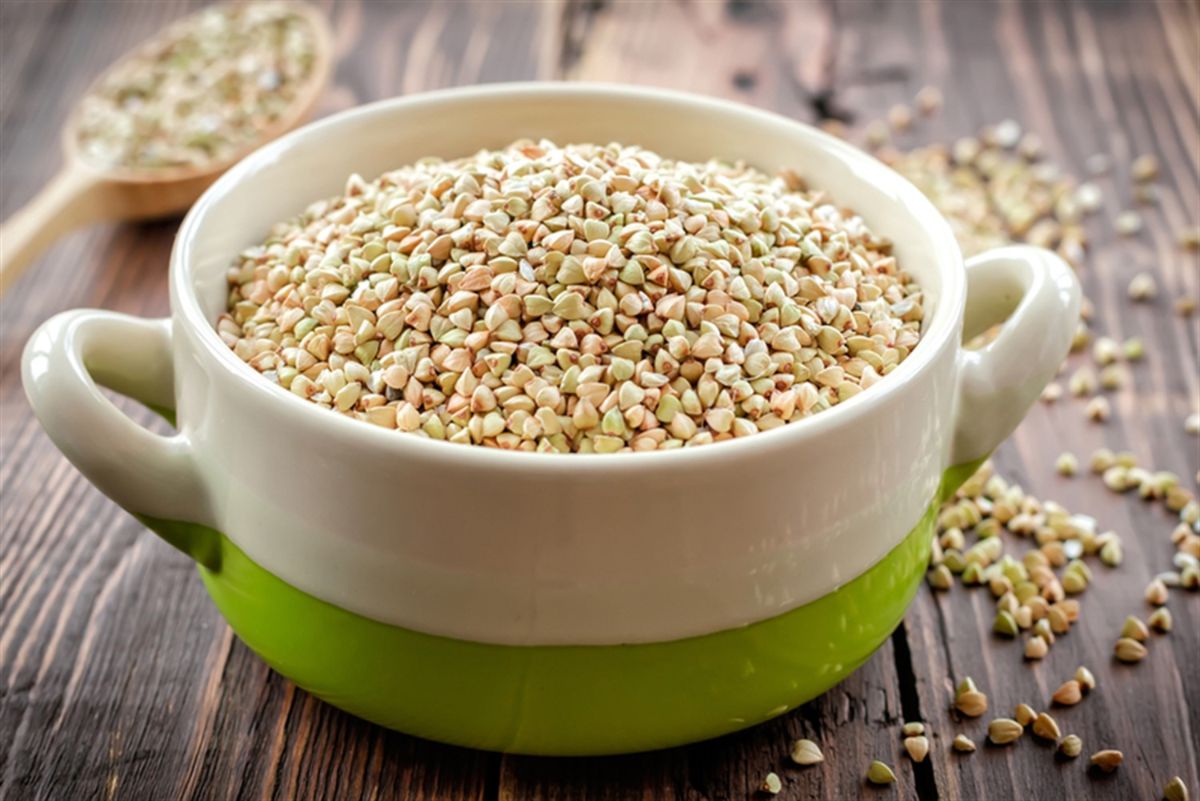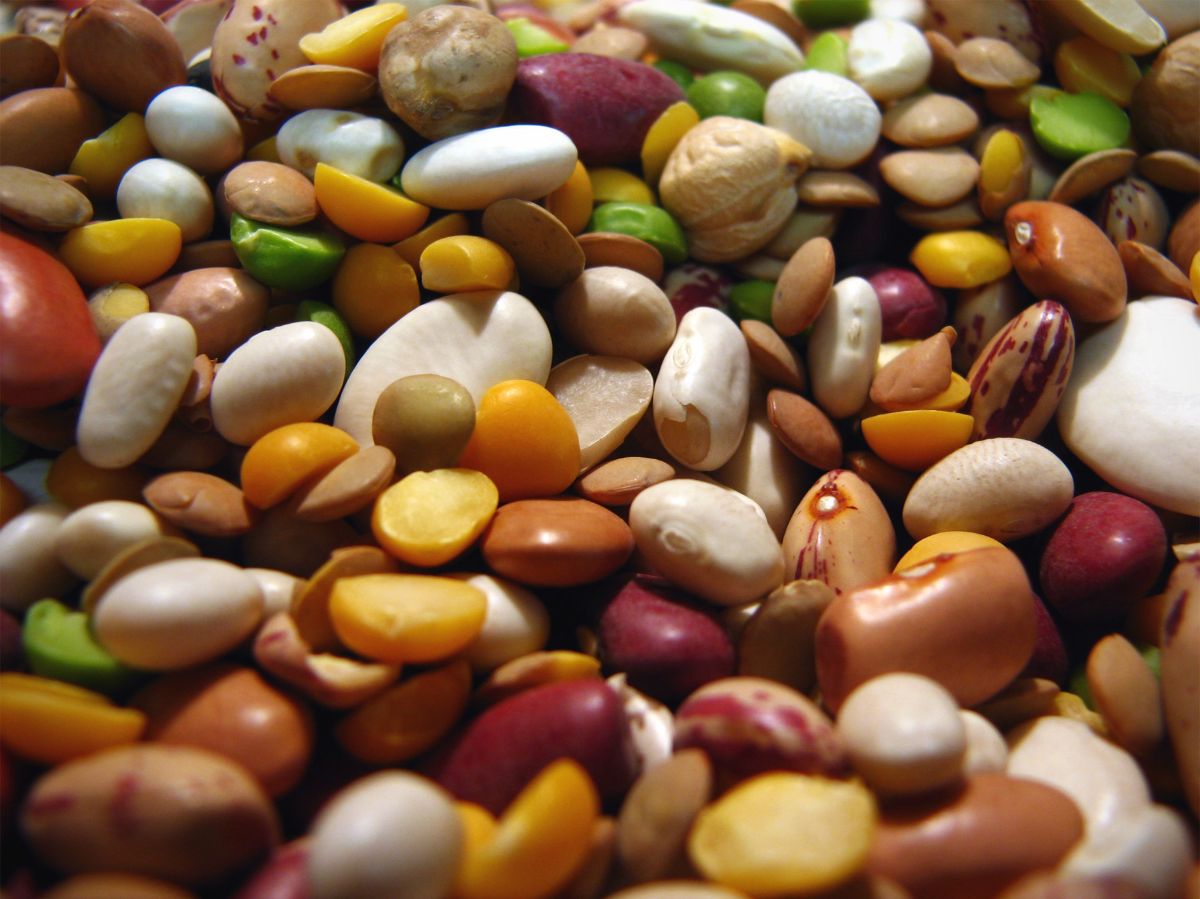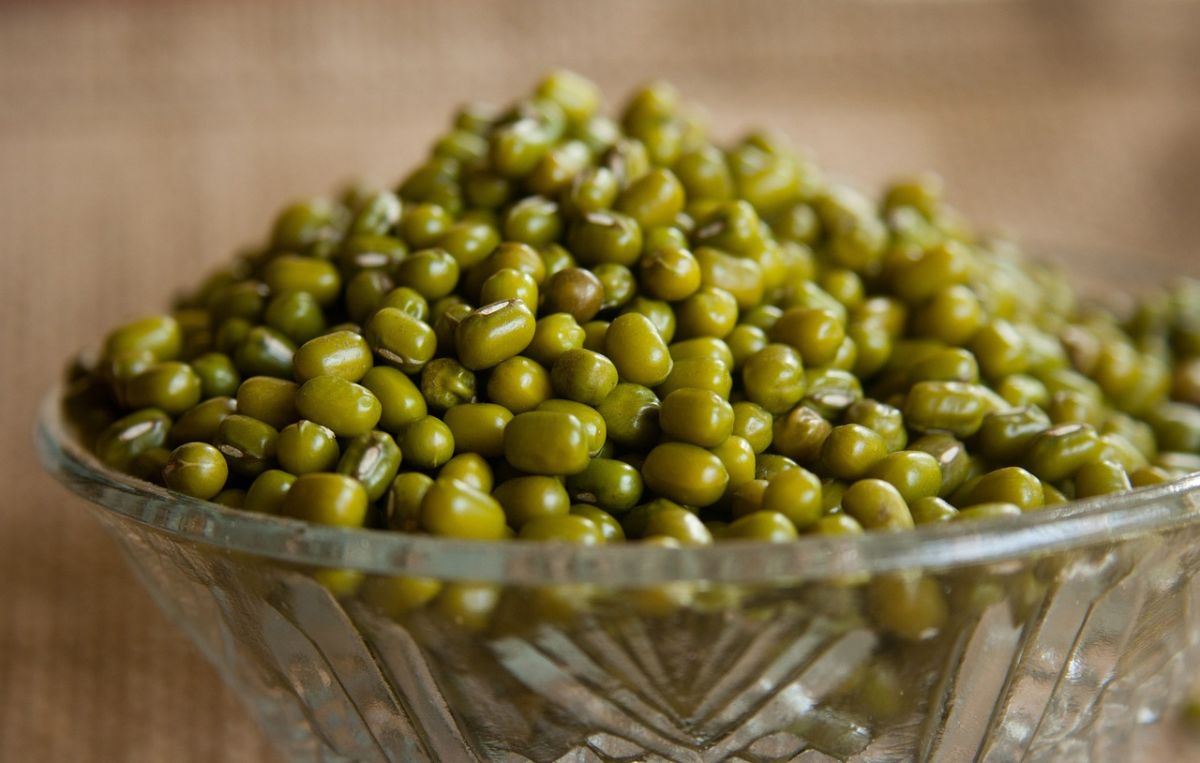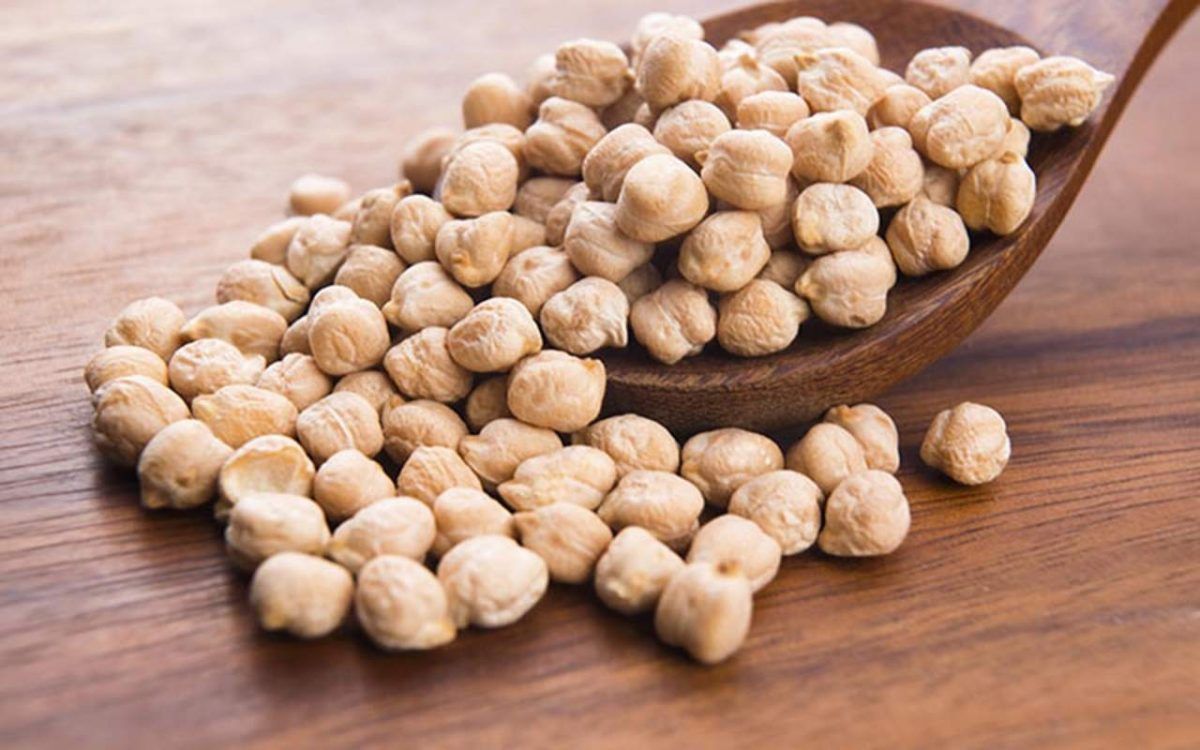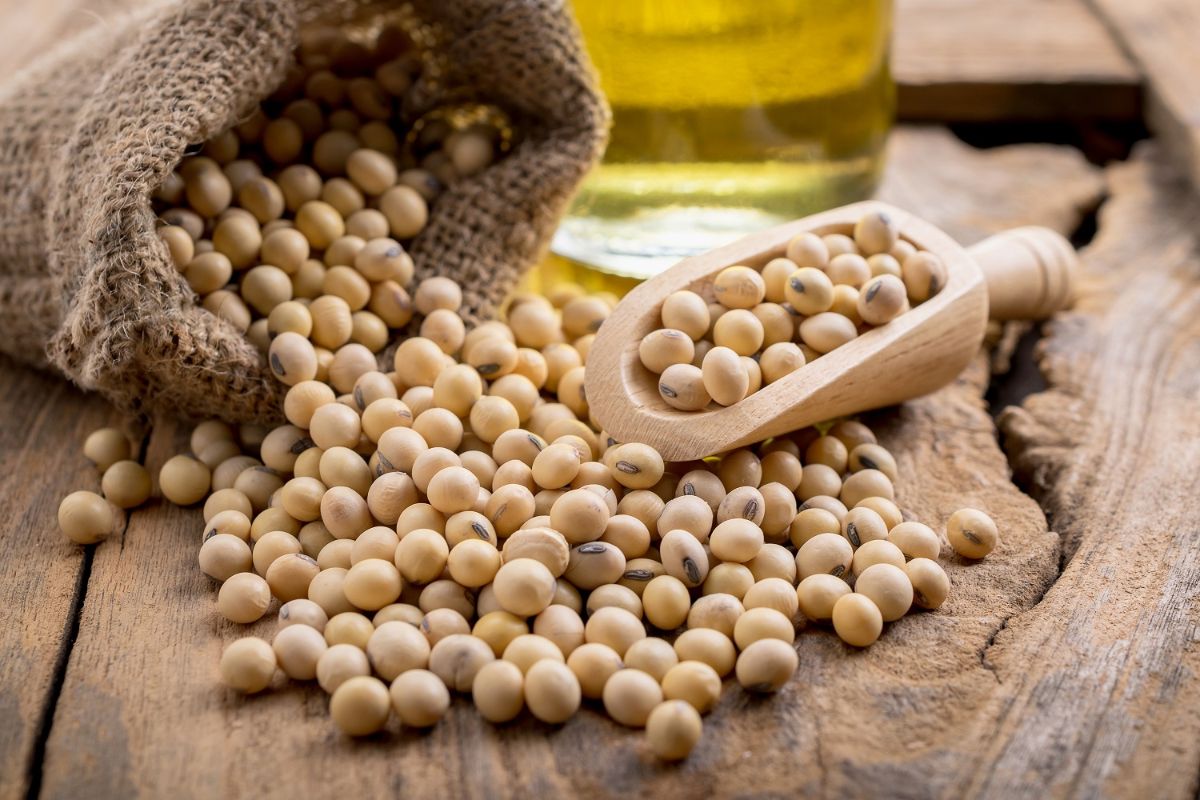How rice is useful for humans — 5 theses based on science
There are many varieties of rice, but two are considered the main ones: white and brown (brown).
White rice is a highly processed product. Its grains do not have a shell (hard protective coating), bran (outer layer) and an embryo (a core rich in nutrients). While in brown rice, only the outer layer of grain has been removed.
For this reason, white rice contains fewer vitamins and minerals than brown rice.
However, white rice still retains a number of biologically active substances and has some beneficial properties for health, albeit to a lesser extent than other species.
Content
5 beneficial properties of rice
Below are the 5 main facts about the benefits of rice for our body (based on scientific research).
1. Contains nutrients
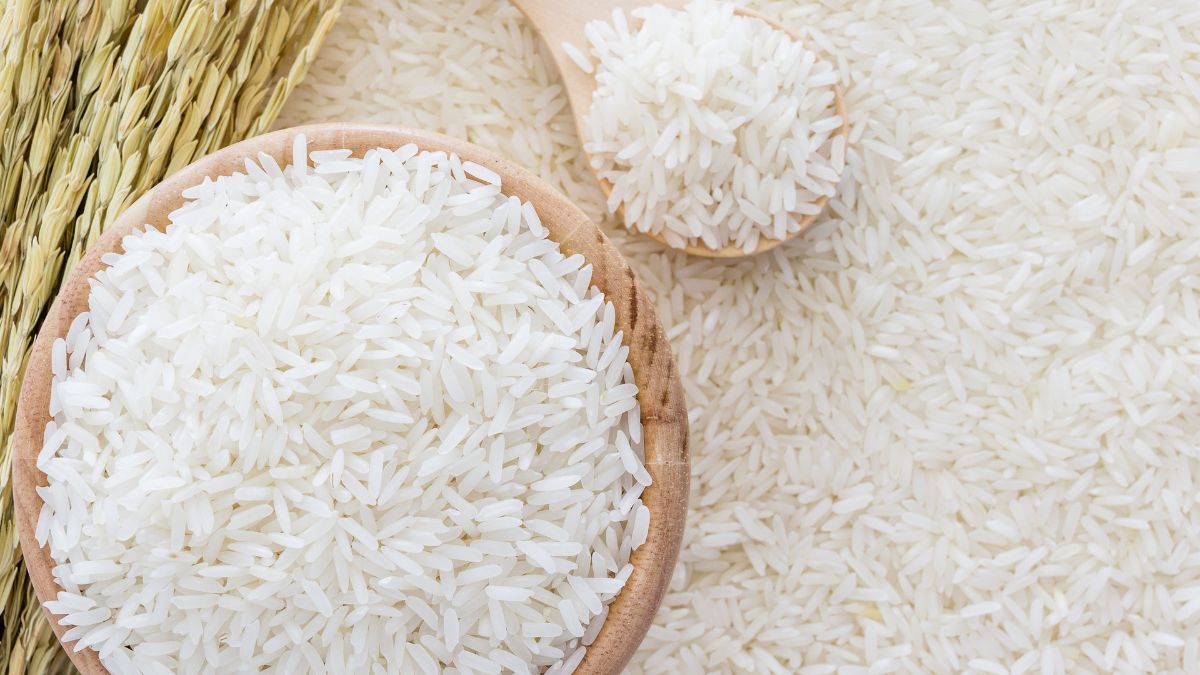
Any rice is a source of nutrients, however, as mentioned earlier, their content in white rice is significantly less than in brown rice.
Content valuable substances in the composition of the two main types of rice are listed below:
| Name of the substance | Percentage of daily requirement (for brown rice) | Percentage of daily requirement (for white rice) |
| proteins | 10 % | 8 % |
| fats | 6 % | 1 % |
| carbohydrates | 33 % | 52 % |
| fiber | 18 % | 2,1 % |
| Vitamin B1 | 36 % | 5 % |
| Vitamin B5 | 21 % | 8 % |
| Vitamin B6 | 24 % | 10 % |
| vitamin PP | 33 % | 17 % |
| Vitamin E | 5 % | 3 % |
| potassium | 10 % | 4 % |
| magnesium | 29 % | 13 % |
| phosphorus | 39 % | 19 % |
| iron | 7 % | 6 % |
| manganese | 143 % | 63 % |
| copper | 30 % | 25 % |
| melen | 31 % | 28 % |
| zinc | 18 % | 12 % |
In the process of industrial processing, white rice loses almost all fiber and a significant proportion of vitamins, minerals and antioxidant substances.
In order to increase the biological potential in some countries (for example, in the USA), rice is artificially saturated with nutrients. Among them: iron, B vitamins, folic acid.
Both brown and white rice are gluten-free, which makes them affordable foods for celiac patients.
2. Helps to lose weight
 The effect of rice on body weight is the subject of active scientific debate.
The effect of rice on body weight is the subject of active scientific debate.
On the one hand, brown rice contains fiber , which, due to its features, helps to properly absorb nutrients from food and normalizes metabolism at the level of adipose tissue.
Fiber also causes an overflow of the stomach, which reduces appetite for the next few hours, leading to a decrease in the total caloric content of the diet.
The effectiveness of brown rice in terms of figure correction has been proven in a number of scientific papers. For example, specialists from the USA claim that regular consumption of the product reduces the risk of developing obesity by 49%. At the same time, the effect is more pronounced in women than in men.
On the other hand, research is either not identified there is no connection between eating white rice and the development of obesity, either demonstrated negative dynamics.
To reduce the caloric content, you can freeze rice after cooking. This leads to the transformation of dietary fibers, which become insoluble and are not absorbed in the intestine.
Brown rice is more effective in reducing body weight than white rice, the effect of which has not been fully studied.
3. Improves the health of the heart and blood vessels
 Zinc, magnesium and potassium contained in all varieties of rice have a beneficial effect on the state of the cardiovascular system. Mineral components reduce blood pressure and prevent the development of arrhythmias.
Zinc, magnesium and potassium contained in all varieties of rice have a beneficial effect on the state of the cardiovascular system. Mineral components reduce blood pressure and prevent the development of arrhythmias.
A number of international studies carried out in USA , UK and Colombia demonstrate that brown rice is able to reduce the likelihood of developing atherosclerosis, as it reduces the concentration of cholesterol in the blood (partly due to a slowdown in its absorption in the intestinal lumen).
Brown rice also contains lignans, plant compounds that prevent increased stiffness of arterial walls with age and deposition of cholesterol crystals in them.
However, regarding white rice observed the reverse trend. It is assumed that, on the contrary, it increases blood pressure and cholesterol levels, reduces the concentration of "useful" lipids in the blood (HDL).
4. Helps prevent diabetes mellitus
 According to the data
foreign scientists, the use of sufficient amounts of magnesium contained in rice can significantly reduce the likelihood of developing type II diabetes mellitus.
According to the data
foreign scientists, the use of sufficient amounts of magnesium contained in rice can significantly reduce the likelihood of developing type II diabetes mellitus.
If we compare brown and white rice in order to prevent this pathology, then brown rice will be more effective due to a lower glycemic index. It does not cause sudden spikes in blood sugar after consumption. Additionally, fiber reduces insulin resistance.
American scientists installed that regular consumption of white rice slightly contributes to the development of type II diabetes mellitus, which calls into question the safety of its use.
5. Protects the body from cancer
 Any variety contains antioxidant substances that block the effects of free radicals on cells during oxidative stress.
Any variety contains antioxidant substances that block the effects of free radicals on cells during oxidative stress.
The result of such an interaction is cell death or malignant degeneration.
A special role is assigned to phenolic compounds (ferulic and caffeic acids, tricine), which are found only in brown rice. They block division and cause apoptosis of cancer cells.
Possible harm
 White rice is a food product with questionable health effects. With limited use, it is useful. However, when taken in large quantities, it can cause harm and cause the development of the following diseases:
White rice is a food product with questionable health effects. With limited use, it is useful. However, when taken in large quantities, it can cause harm and cause the development of the following diseases:
- Type II diabetes mellitus;
- Coronary heart disease;
- Obesity.
But brown rice lacks the above disadvantages.
At the same time, any type of rice can cause the following side effects:
- Arsenic poisoning. Almost all rice varieties are capable of accumulating this toxic metal. It is recommended to give preference to brown rice grown in Pakistan or India. These countries have the lowest concentration of arsenic in the product. It is also recommended to include rice in the diet of children and pregnant women with extreme caution.
- Dyspeptic disorders. An abundance of fiber can cause an overload of the gastrointestinal tract, which will manifest itself in the form of stool disorders (diarrhea or constipation), nausea, bloating, increased gas formation.
- Allergic reactions. When eating rice, both local and systemic allergopathologies may occur. It is forbidden to consume cereals in the presence of increased sensitization of the body to it.
It is recommended to use rice with extreme caution in case of impaired kidney function. It contains potassium and phosphorus, which cannot be completely eliminated from the body if the kidneys do not work properly. The accumulation of such minerals is fraught with cardiac arrest or damage to the mucous membranes of the gastrointestinal tract.
What are the types of rice?
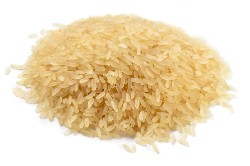 There are many varieties of rice that differ from each other in a number of parameters. There are several classifications.
There are many varieties of rice that differ from each other in a number of parameters. There are several classifications.
Depending on the shape, they distinguish:
- Round-grained. is widely distributed in Russia and the countries of the former USSR. During cooking, a thick mass resembling cream is formed. Great for puddings and pies.
- Long-grained. Is grown in Asia, South and North America. Long grains of rice do not stick together during cooking and have bright taste qualities.
- Medium-grained. Is grown mainly in Europe. According to its consumer properties, it occupies an intermediate position between round and long-grained rice.
There is no fundamental difference in the volume of nutrients between the presented rice varieties. The only disadvantage of round–grained varieties is high starch content in the composition. It is not recommended for people with type II diabetes and obesity.
According to the method of industrial processing, rice is classified as follows:
- Brown (unpolished). It is not sanded and represents whole grains. It has a bright red or brown color. It is in such a product that the largest amount of biologically active substances is observed.
- White (polished). It has a little more starch than brown rice, the content of minerals and vitamins is reduced by 30-70%.
- Steamed. Is obtained during steaming and subsequent grinding of rice. During exposure to steam, up to 80% of the biologically active components pass into the central parts of the grain, which makes it more beneficial to health than non-steamed rice.
The most popular varieties of rice are:
- Jasmine. Is distinguished by its snow-white color and bright aroma. The grains are long and do not stick together when cooking. It is cultivated in Thailand.
- Basmati. Has thin and long grains. It is grown in India.
- Red rice. Is found in Western countries and in China. It is one of the main elements of Chinese folk medicine. It is effective for the prevention of cardiovascular disorders.
- Wild rice. In fact, it is a marsh grass, shaped like rice. The color of the "grains" is black. The product is rich in fiber, vitamins and minerals. It has the ability to lower cholesterol levels and adjust the functioning of the central nervous system.
How to cook it properly?
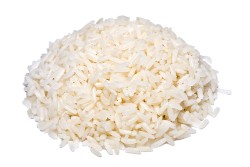 Cooking rice requires a careful rice/water ratio. It is different for each type:
Cooking rice requires a careful rice/water ratio. It is different for each type:
- Long–grained - 1:1.5;
- Medium–grained - 1:2;
- Round grained – 1:3;
- Steamed – 1:2;
- Brown 1:2.5;
- Wild – 1;3,5.
The recipe is as follows:
- Rinse the grains under water.
- Soak in water for an hour. Then drain the water.
- Immerse the grains in enameled dishes, fill with water.
- Put on fire and bring to a boil. Simmer over low heat until tender. It will take 20 minutes to cook white ground rice, about 30 minutes for steamed rice, 30-40 minutes for brown rice, and 1 hour for wild rice.
- Drain the water and let the rice cool slightly.
For convenience, you can buy rice in specially packaged bags.
How to take it correctly?
 It is better to eat rice in the daytime. Eating at night, due to the abundance of fiber, can cause an overload of the digestive system and, as a result, problems falling asleep.
It is better to eat rice in the daytime. Eating at night, due to the abundance of fiber, can cause an overload of the digestive system and, as a result, problems falling asleep.
It is also necessary to limit the inclusion of rice in the diet in the morning, especially on an empty stomach. The food for breakfast should be light.
If rice is used for weight loss, then you need to follow the following rules:
- Eat exclusively brown rice;
- When cooking, add vegetable oils (preferably olive, but not sunflower) at the rate of 1 tsp per 100 grams of grains;
- After cooking, freeze the rice in the freezer for several hours, and only then consume it (this will change the structure of the starch and make most of it inaccessible to absorption).
The application of the described rules allows you to reduce the energy value by 40%.
Products based on it
 The culinary industry produces a lot of rice-based products. Among them:
The culinary industry produces a lot of rice-based products. Among them:
- Flour. Is characterized by a high content of dietary fiber, zinc and vitamin B. It has a beneficial effect on digestion, the work of the central nervous system and immune systems. Bread, loaves, biscuits and noodles made from similar flour are low in calories and extremely nutritious.
- Milk. Is made from whole grain rice. It is not inferior to cow's milk in terms of calcium and vitamins, but it has a low fat content. In folk medicine, it is used for strengthening of bone tissues and prevention of atherosclerosis.
- Oil. Is used for food and cosmetic purposes. Improves the condition of the skin, protects it from exposure to ultraviolet sunlight, prevents baldness. It is also used to reduce the "viscosity" of blood and cholesterol levels.
- Kvass. Does not have bright taste indicators, but is effective in eliminating inflammatory reactions against the background of gout, rheumatic diseases.
- Vinegar. is widely known in Japanese folk medicine. It is used for detoxification of the body and prevention of malignant neoplasms.
Conclusion
- Thus, despite a number of positive effects of white rice, it is recommended to give preference to the brown kind. Its positive effect is more pronounced and has been confirmed by many scientific studies.
- Regular consumption of rice reduces the risk of developing type II diabetes mellitus, cardiovascular and oncological diseases.
- If all the rules of preparation and processing are followed, it can also provide significant assistance in reducing body weight.
